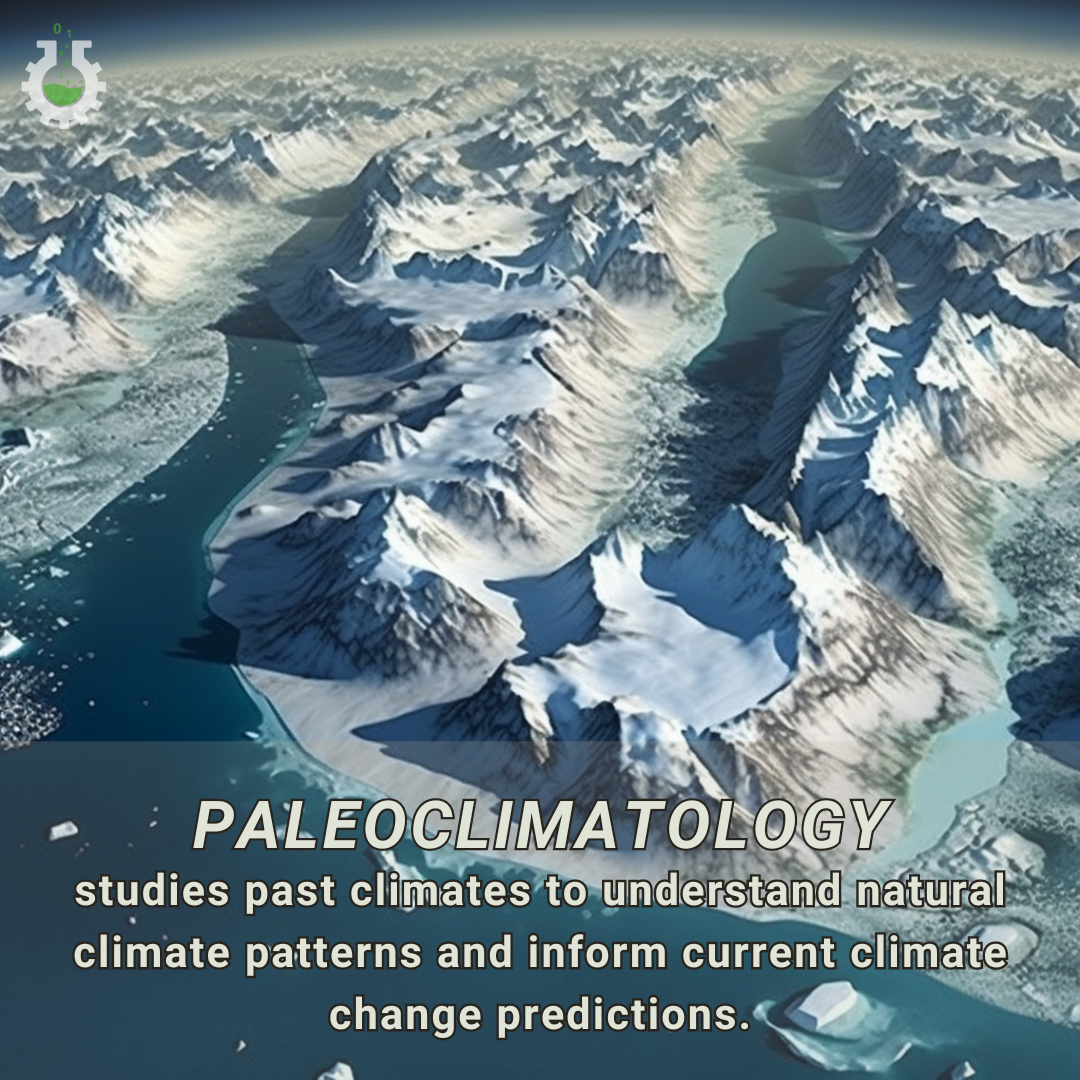July 31, 2024
Climate Change Poster Collection of the Day – Paleoclimatology Climatology
Book a Demo
Today’s Climate Change Poster Collection focus on Paleoclimatology, the scientific study of Earth’s ancient climates, is a field that offers profound insights into the natural variability and long-term trends of our planet’s climate system. This discipline involves the meticulous examination of natural archives such as ice cores, tree rings, sediment layers, and coral reefs to reconstruct past climate conditions spanning hundreds, thousands, or even millions of years. These natural records serve as time capsules, preserving invaluable information about Earth’s climatic history and the various factors that have influenced it over geological timescales. By analyzing these archives, scientists can piece together a comprehensive picture of how Earth’s climate has evolved, driven by a complex interplay of factors including volcanic activity, variations in solar radiation, continental drift, and fluctuations in greenhouse gas concentrations.
The significance of paleoclimatology in the context of modern climate change cannot be overstated. One of the key contributions of this field is the establishment of a baseline against which current climate changes can be measured. For example, ice cores extracted from the polar regions of Antarctica and Greenland contain trapped air bubbles that provide direct measurements of past atmospheric carbon dioxide levels. By correlating these CO2 levels with temperature data inferred from the isotopic composition of the ice, scientists have been able to demonstrate that the rapid increase in atmospheric CO2 observed today is unprecedented in at least the last 800,000 years. This stark revelation underscores the profound impact of human activities, particularly the burning of fossil fuels, on the current trajectory of climate change.
Moreover, paleoclimatology plays a crucial role in validating and refining climate models that are used to predict future climate scenarios. These models are essential tools for scientists and policymakers as they attempt to forecast the potential impacts of ongoing climate change and develop strategies to mitigate its effects. By comparing the outputs of these models with paleoclimate data, scientists can test the accuracy of their predictions and make necessary adjustments to improve their reliability. This iterative process enhances our ability to anticipate future climatic conditions and informs the development of more effective and targeted climate policies.
The study of past climate events, such as the Medieval Warm Period (approximately 950 to 1250 AD) and the Little Ice Age (approximately 1300 to 1850 AD), also provides valuable context for understanding natural climate variability. These periods of relative warmth and cold, respectively, highlight the inherent dynamism of Earth’s climate system and the potential for abrupt and significant climate shifts. By examining the causes and consequences of these historical climate fluctuations, scientists can gain insights into the potential risks and vulnerabilities associated with contemporary climate change. This historical perspective is essential for developing robust adaptation strategies that can help societies cope with the accelerating pace of climate change.
In addition to its scientific contributions, paleoclimatology also has important implications for public awareness and education. By communicating the findings of paleoclimate research to a broader audience, scientists can help to foster a deeper understanding of the urgency and scale of the climate crisis. This, in turn, can galvanize public support for climate action and encourage individuals, communities, and governments to take meaningful steps to reduce greenhouse gas emissions and build resilience to climate impacts.
Paleoclimatology not only enriches our understanding of Earth’s climatic history but also serves as a critical tool in addressing the pressing challenges posed by today’s rapidly changing climate. By providing a long-term perspective on climate variability and change, this field helps to contextualize the unprecedented nature of current climate trends and underscores the importance of immediate and sustained action to mitigate the impacts of human-induced climate change. As we continue to unravel the complexities of Earth’s climate system, the insights gained from paleoclimatology will remain indispensable in guiding our efforts to secure a sustainable and resilient future for generations to come.
Discover an inspiring collection of climate change poster.



